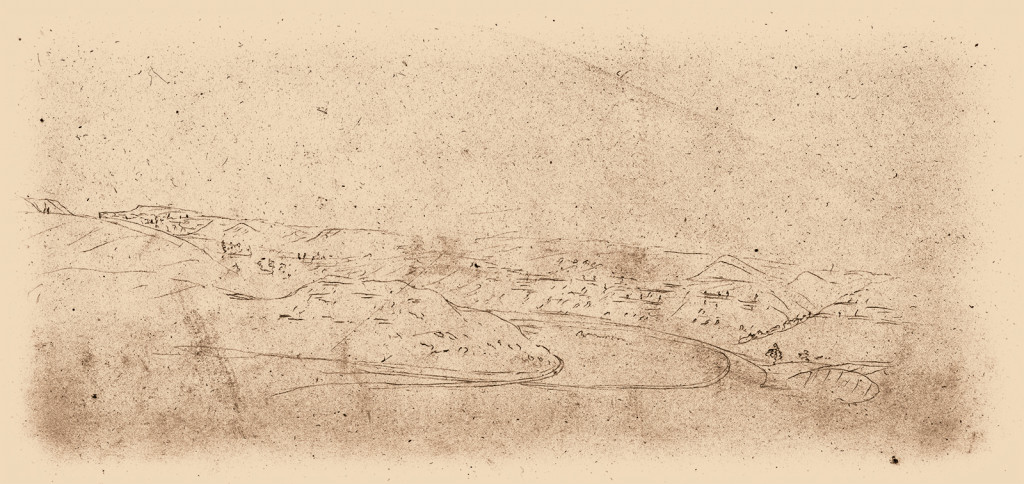
By David L. Bristow, History Nebraska
Imagine sitting in a darkened theater watching a giant canvas on stage. The canvas is spooled at either end and advances like a giant scroll. Painted on the canvas are scenes of the Oregon Trail. A narrator describes the great journey that thousands of your fellow citizens are making.
The giant scroll was called the Pantoscope, and it was big hit in Eastern theaters in the 1850s. Designed and promoted by entrepreneur J. Wesley Jones, it was based on sketches and photographs made along the trail by several artists and photographers that Jones hired for the project.
The Pantoscope and most of the original images are lost, except for those of one of the artists, William Quesenbury (CUSH-en-berry). The Omaha World-Herald purchased his sketchbook and donated it to History Nebraska.
David Murphy of History Nebraska co-authored a book about Quesenbury titled Scenery, Curiosities and Stupendous Rocks. He visited places “Cush” had sketched and was impressed with the artist’s accuracy. Some of the sketches were labeled, but most were not.
The one shown here was not, but its placement in the sketchbook led Murphy to believe it portrayed Ash Hollow, an important stop along the trail and now a state historical park. A drawing made in 1851 would be one of the earliest views of the site and would show the area during the peak of westward migration.

To be sure, Murphy studied topographic maps and then visited Ash Hollow. He carried a copy of the sketch to help identify the place where his view matched the lines on the paper. When he found the spot, he was looking northeast toward the Platte Valley.
One big difference was all the trees that now obscure the 1850s view of the valley. Fire suppression allows them to grow thick, and present-day travelers aren’t cutting them down for firewood. Here’s how Jones described the scene for the Pantoscope: “Winding over precipitous crags, we descend through Ash Hollow, to the north branch of the Platte River in the distance. It takes its name from the fine groves of ash trees which … have nearly succumbed to the necessities of the traveller, who here lays in a supply of fuel to boil his coffee, for the next 200 miles affords not even a schrub large enough for a walking stick.”
Visit History Nebraska’s website at history.nebraska.gov.
